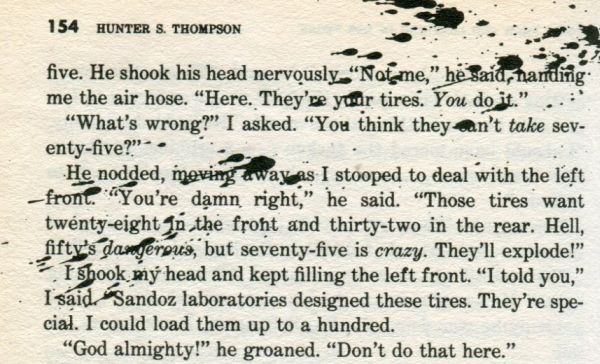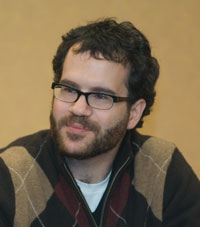 Αντικουλτούρα: Τα “κακά” παιδιά by Juan Carlos Kreimer
Αντικουλτούρα: Τα “κακά” παιδιά by Juan Carlos Kreimer
My rating: 3 of 5 stars
Δύσκολα η γενιά μας έχει πρόσβαση σε πληροφορίες για το τι γινόταν 50 χρόνια πριν, σε μια εποχή που είχε ελπίδα, όραμα και παραδόξως -γιατί τότε ήταν ο τρόπος ζωής των παρείσακτων – γέννησε μεγάλο μέρος αυτού που σήμερα λέμε pop culture (δηλαδή δημοφιλή κουλτούρα). Δεν διδάσκεται πουθενά και όλοι μας σχεδόν έχουμε σαν δεδομένα αυτά που έγιναν τότε: από τα κεκτημένα στα δικαιώματα των μαύρων μέχρι τους ανατρεπτικούς μουσικούς που γέννησαν τη ροκ και τις ενθεογενείς ουσίες οι οποίες άνοιξαν μυαλά αλλά διώχτηκαν και συκοφαντήθηκαν. Δυστυχώς από τότε έχει περάσει αρκετός καιρός ώστε να μαθαίνουμε μόνο αυτά τα οποία το κύριο ρεύμα μπορεί να χωνέψει και έχει εντάξει· είμαι σίγουρος πως πολλές ιστορίες, φιγούρες και άλλα σημαντικά για την εποχή γεγονότα και διεργασίες έχουν πια ξεχαστεί ή/και επιμελώς θαφτεί.
Το βιβλίο ως βιβλίο καταπιάνεται με όλα αυτά. ο Juan Carlos Kreimer και ο Frank Vega προσπαθούν με το Αντικουλτούρα: Τα «κακά» παιδιά (thumbs-down στην μετάφραση του τίτλου και των εισαγωγικών, που στο πρωτότυπο είναι Contracultura para principiantes, δηλαδή Αντικουλτούρα για Αρχάριους), να μας δώσουν εμάς, την γενιά του 21ου αιώνα, τι έγινε εκεί πίσω στην εποχή η οποία δημιούργησε τις περισσότερες φιγούρες στις οποίες πιστεύει το σημερινό περιθώριο, όσο κι αν σπάνια έχει συνείδηση της συστημικότητας -ήδη απ’το ’70- πολλών απ’τα στοιχεία που αυτό οικοιοποιείται σήμερα. Τα καταφέρνει; Ναι και όχι.
Ναι, γιατί αναφέρει -αρκετά συμπυκνωμένα είναι αλήθεια- όλα αυτά που μόλις έγραψα. Πώς έγιναν διάσημοι οι Beatles, πώς ξεκίνησαν οι Sex Pistols, ποιος έκανε το LSD διάσημο, ποιοι ήταν οι πρώτοι διανοητές beat, ποιες ταινίες επηρέασαν το πνεύμα της εποχής, γιατί δολοφονήθηκαν όλοι οι πολιτικοί -μαύροι και λευκοί- οι οποίοι θα μπορούσαν να είχαν κάνει τη διαφορά, τι διάβαζαν οι χίπιδες, τι δυσφήμισε τα κινήματα κτλ.
Όχι, γιατί δεν κατάφερε να δημιουργήσει μια συνεκτική ιστορία που θα συνέδεε όλην αυτή την πληροφορία σε μια ιστορία, σε μια ενιαία αφήγηση. Διαβάζοντας το μαθαίνεις αποσπασματικά τις λεπτομέρειες αλλά δεν λαμβάνεις την όλη αίσθηση της εποχής τόσο πολύ.
Τελικά όμως θα μου φανεί χρήσιμο ως σημείο αναφοράς για να ψάξω από μόνος μου κάποια από τα πρόσωπα, τις ταινίες, τα συγκροτήματα, τα πρόσωπα και τα γεγονότα που σημάδεψαν την γέννηση της αντικουλτούρας. Γιατί αν δεν ξέρεις ιστορία, είσαι καταδικασμένος να την επαναλάβεις (Santayana), ακόμα κι αν η ιστορία δεν επαναλαμβάνεται, παρα μόνο κάποιες φορές κάνει ομοιοκαταληξία (Twain) και τελικά το μεγαλύτερο μάθημα που μπορεί να μας διδάξει είναι πως οι άνθρωποι δεν μαθαίνουμε από αυτή (Huxley). Νιώθω πολύ πόζερος που μόλις το έγραψα αυτό.
Πολλά ευχαριστώ στον Κίρα που μου έκανε το βιβλίο δώρο πέρσι τα Χριστούγεννα. Άργησα (σχετικά!) αλλά δεν μου ξέφυγε.









